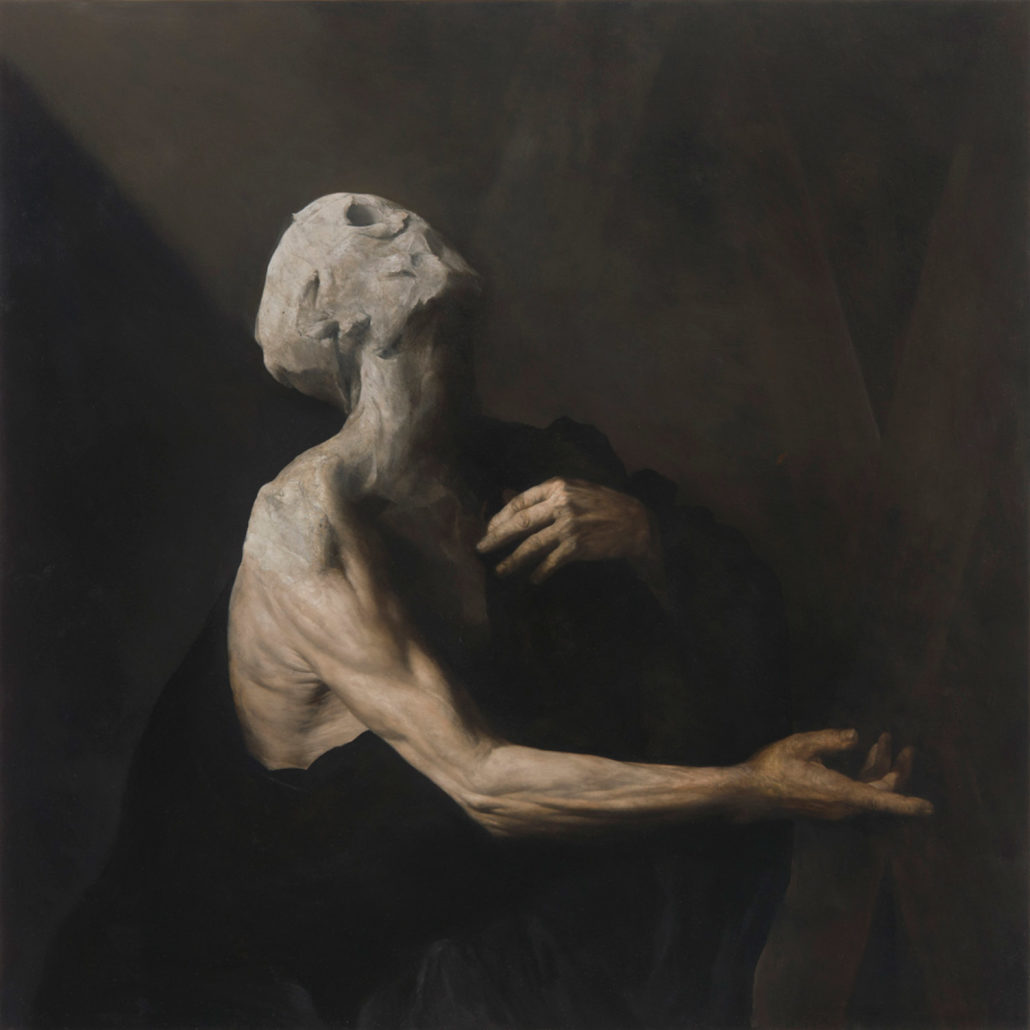
In the past, paintings were commissioned to invoke devotion, loyalty and awe. For me this painting makes reference to formal qualities, to the deception of real life that paintings seek to invoke, when in reality they are pigment, medium and supporting surface. If google is right, the title translates into English as ‘ under the eyes of the tired form’ suggesting a rebellious compulsion from the artist rather than a desire to revere the tradition and history in which he works. Displayed horizontally we look down upon to it, as though in a coffin, invoking pity for the recent fate it has suffered at the hands of the artist. Sotto gli occhi la forma stanca, 2013, repeats the act of dissection, scrunching up the surface of a Christ-like portrait. Pulling the surface away hides rather than enlightens and we, like the unseen copper-covered faces of the curious in the diptych, are left un-seeing. But rather than revealing bones, muscles and tendons, we see a black and blank undersurface. The skin of paint has been half pushed and pulled away, echoing the fragile surface covering our bodies.

This life-size figure is in the process of being physically dissected, a process we may have interrupted. I was first drawn to Vomere, a copper-surfaced diptych, peppered by oval forms, the heads of an audience who are looking at a painted figure forming a table in front of them. His paintings both refer to the past through their subject matter and the manner in which they are depicted, and are rooted in the contemporary, by their very recent act of destruction. Far from it, he then puts his destroyed masterpieces on display. Yet he is neither an artist who is precious about his paintings, nor a Victor Frankenstein, who seeks to destroy because he is horrified by what he has created. The gallery’s press release states that Samorì examines obsession, one aspect of which is the obsession of the artist with his own work. I imagine the artist labouriously painting for weeks or maybe months, building up layer upon layer of paint, and then one day turning around and destroying these creations in which he has invested so much. The act of their destruction being all the more perverse because it is carried out on paintings which have been carefully rendered with art historical references and technique.

His show, Guarigione Dell’Ossesso at Galerie Christian Ehrentraut, was described to me as perfect baroque-style paintings that the artist then destroys so it naturally piqued my interest.Īnd what destruction! The paintings are gouged, pierced, flecked, scratched, scrunched, shrouded and pummeled. I am writing it in Bologna about an Italian artist, Nicola Samorì, who studied here and whose work I saw the day before I left Berlin. This post serves, I hope, as a good bridge between my time in Berlin and the next few weeks that I will spend in Italy.


 0 kommentar(er)
0 kommentar(er)
